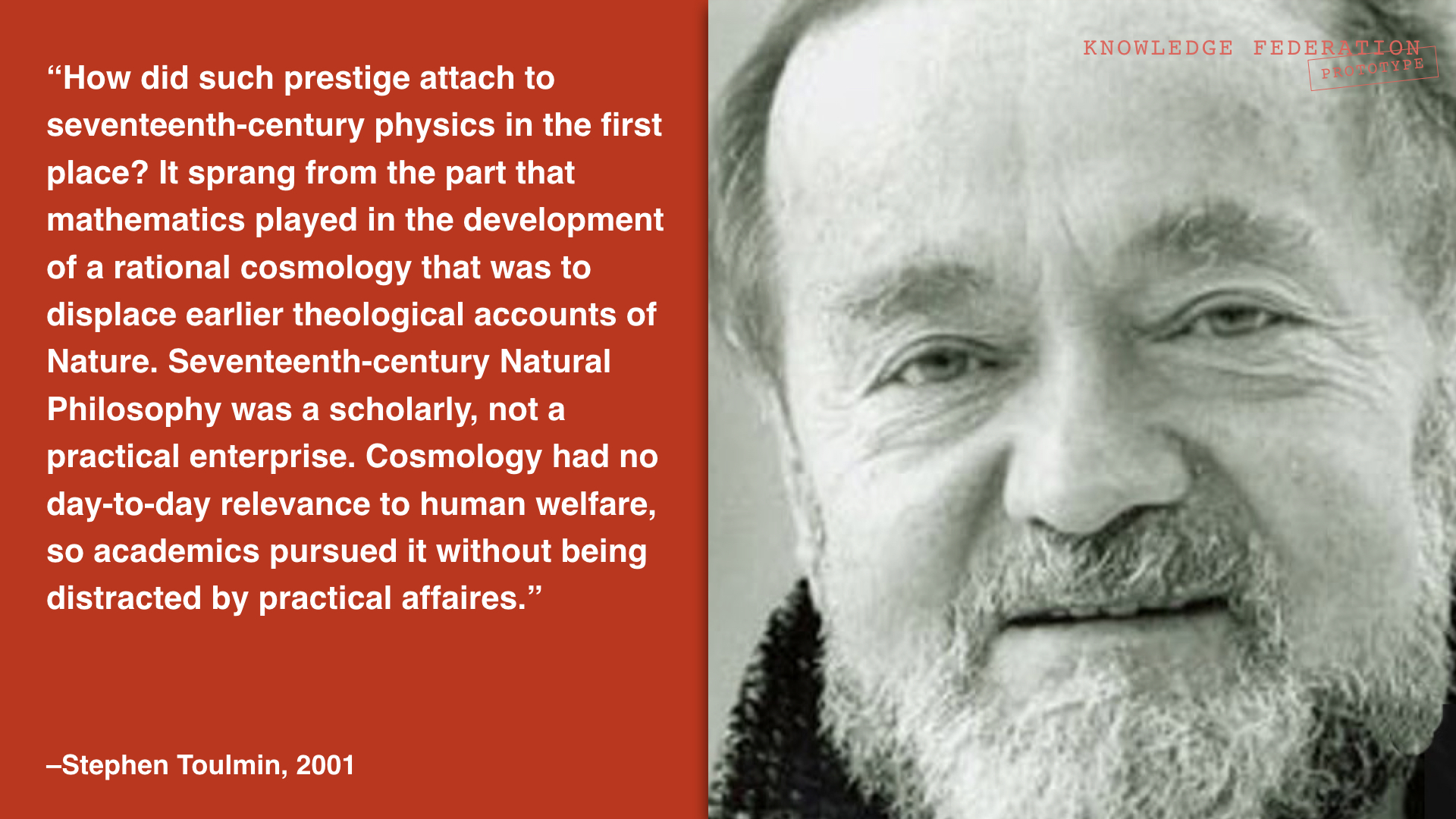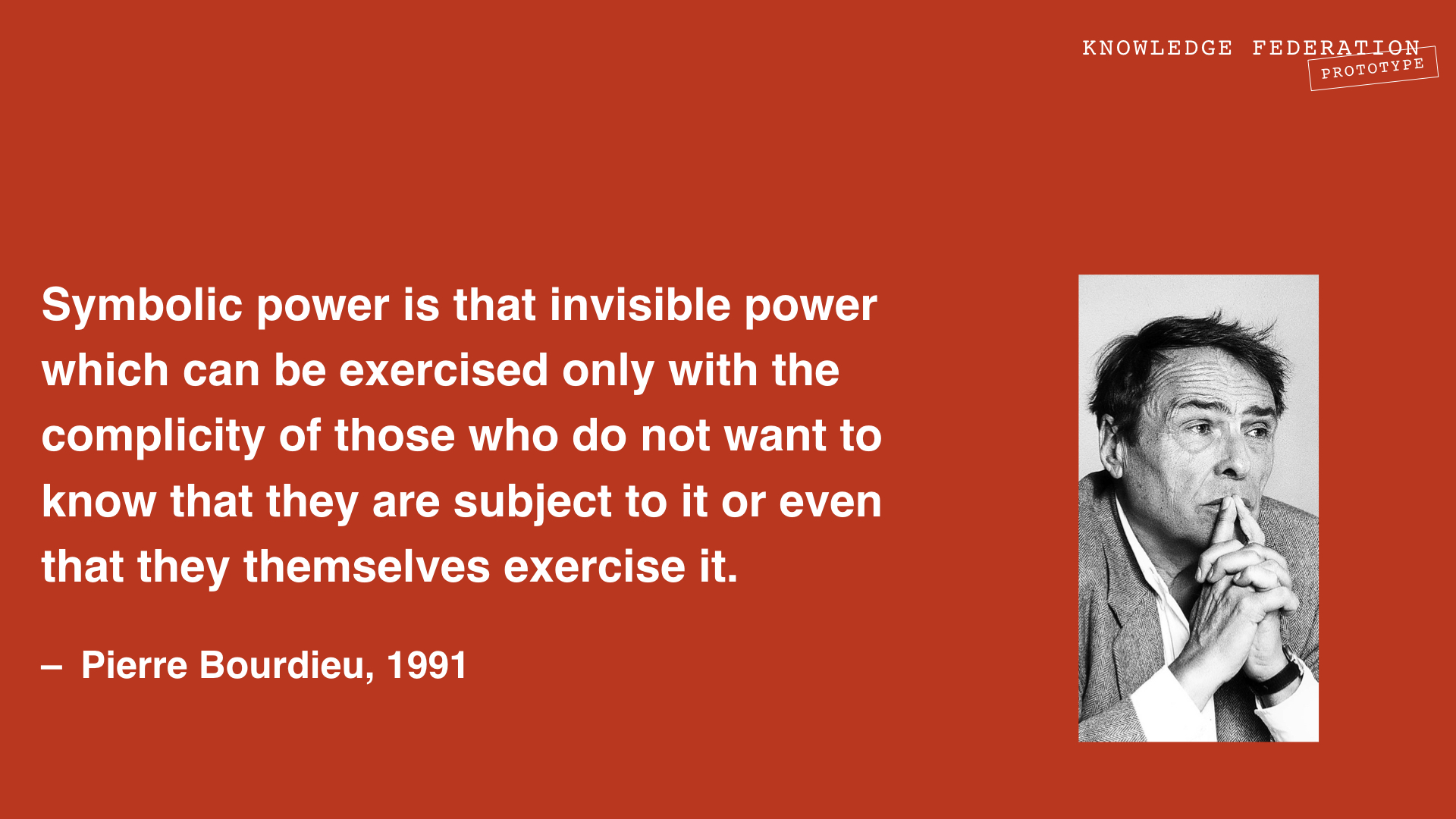Difference between revisions of "Holotopia"
m |
m |
||
| Line 417: | Line 417: | ||
[[File:Einstein-Watch.jpeg]] | [[File:Einstein-Watch.jpeg]] | ||
</p> | </p> | ||
| − | <p> | + | <p><em>It is simply impossible</em> to open up the 'mechanism of nature', and verify that our ideas and models <em>correspond</em> to the real thing!</p> |
<p>How, then, did our "reality picture" come about?</p> | <p>How, then, did our "reality picture" come about?</p> | ||
| Line 430: | Line 430: | ||
<!-- XXX | <!-- XXX | ||
| − | |||
| − | |||
| − | + | XXXXXXX | |
| − | |||
| − | |||
| − | |||
<p>This conclusion suggests itself: Changing <em>the systems in which we live and work</em>—however rational, and necessary, that may be—is for <em>similar</em> reasons inconceivable. </p> | <p>This conclusion suggests itself: Changing <em>the systems in which we live and work</em>—however rational, and necessary, that may be—is for <em>similar</em> reasons inconceivable. </p> | ||
| Line 1,372: | Line 1,367: | ||
<p>The first <em>vignette</em> describes a real-life event, where two Icelandic horses living outdoors—aging Odin the Horse, and New Horse who is just being introduced to the herd where Odin is the stallion and the leader—are engaged in turf strife. It will be suffice to just imagine these two horses running side by side, with their long hairs waving in the wind, Odin pushing New Horse toward the river, and away from his pack of mares.</p> | <p>The first <em>vignette</em> describes a real-life event, where two Icelandic horses living outdoors—aging Odin the Horse, and New Horse who is just being introduced to the herd where Odin is the stallion and the leader—are engaged in turf strife. It will be suffice to just imagine these two horses running side by side, with their long hairs waving in the wind, Odin pushing New Horse toward the river, and away from his pack of mares.</p> | ||
| + | |||
| + | ------- | ||
| + | |||
| + | <p>The second story is about sociologist Pierre Bourdieu, and his "theory of practice"—where Bourdieu provided a conceptual framework to help us understand how <em>socialization</em> works; and in particular its relationship with what he called "symbolic power". Our reason for combining these two stories together is to suggest that we humans exhibit a similar turf behavior as Odin—but that this tends to remain largely unrecognized. Part of the reason is that, as Bourdieu explained, the ways in which this atavistic disposition of ours manifests itself are incomparably more diverse and subtle than the ones of horses—indeed as more diverse so as our culture is more complex than theirs. </p> | ||
| + | |||
| + | <p>Bourdieu devised two keywords for the symbolic cultural 'turf'" "field" and "game", and used them interchangeably. He called it a "field", to suggest (1) a field of activity or profession, and the <em>system</em> where it is practiced; and (2) something akin to a magnetic field, in which we people are immersed as small magnets, and which subtly, without us noticing, orients our seemingly random or "free" movement. He referred to it as "game", to suggests that there are certain semi-permanent roles in it, with allowable 'moves', by which our 'turf strife' is structured in a specific way.</p> | ||
| + | |||
| + | <p>To explain the dynamics of the game or the field, Bourdieu adapted two additional keywords, each of which has a long academic history: "habitus" and "doxa". A habitus is composed of embodied behavioral predispositions, and may be thought of as distinct 'roles' or 'avatars' in the 'game'. A king has a certain distinct habitus; and so do his pages. The habitus is routinely maintained through direct, body-to-body action (everyone bows to the king, and you do too), without conscious intention or awareness. Doxa is the belief, or embodied experience, that the given social order is <em>the</em> reality. "Orthodoxy" acknowledges that multiple "realities" coexist, of which only a single one is "right"; doxa ignores even the <em>possibility</em> of alternatives.</p> | ||
| + | |||
| + | <p>Hence we may understand <em>socialized reality</em> as something that 'gamifies' our social behavior, by giving everyone an 'avatar' or a role, and a set of capabilities. Doxa is the 'cement' that makes such <em>socialized reality</em> relatively permanent.</p> | ||
| + | |||
| + | <p>A [[vignette|<em>vignette</em>]] involving Antonio Damasio as cognitive neuroscientist completes this <em>thread</em>, by helping us see that the "embodied predispositions" that are maintained in this way have a <em>decisive role</em>, contrary to what the 19th century science and indeed the core of our philosophical tradition made us believe. Damasio showed that our socialized <em>embodied</em> predispositions act as a cognitive filter—<em>determining</em> not only our priorities, but also the <em>options</em> we may be able to rationally consider. Our embodied, socialized predispositions are a reason, for instance, why we don't consider showing up in public naked (which in another culture might be normal). </p> | ||
| + | |||
| + | ------- | ||
Revision as of 10:10, 20 August 2020
Contents
HOLOTOPIA
An Actionable Strategy
Imagine...
You are about to board a bus for a long night ride, when you notice the flickering streaks of light emanating from two wax candles, placed where the headlights of the bus are expected to be. Candles? As headlights?
Of course, the idea of candles as headlights is absurd. So why propose it?
Because on a much larger scale this absurdity has become reality.
The Modernity ideogram renders the essence of our contemporary situation by depicting our society as an accelerating bus without a steering wheel, and the way we look at the world, try to comprehend and handle it as guided by a pair of candle headlights.
Scope
"Act like as if you loved your children above all else",Greta Thunberg, representing her generation, told the political leaders at Davos. Of course the political leaders love their children—don't we all? But what Greta was asking for was to 'hit the brakes'; and when our 'bus' is inspected, it becomes clear that its 'brakes' too are dysfunctional. Changing the system, on the other hand, is well beyond what the politicians have the power to do, or even conceive of.
The COVID-19 crisis too is demanding systemic change.
So who, what institution or system, will lead us in "changing course" by changing the systems in which we live and work—our collective mind to begin with?
Both Jantsch and Engelbart believed that "the university" would have to be the answer; and they made their appeals accordingly. But the universities ignored them—as they ignored Bush and Wiener before them, and others who followed.
Why?
It is tempting to conclude that the university institution too followed the general trend, and organized itself as a power structure. But to see solutions, we need to look at deeper causes.
We readily find them in the way in which the university institution developed. The academic tradition did not originate as a way to pursue practical knowledge, but to freely pursue knowledge for its own sake.
And as we pointed out in the opening paragraphs of this website, by highlighting the iconic image of Galilei in house arrest,
it was this free pursuit of knowledge that led to the last "great cultural revival".
The ethos of the pursuit of knowledge for its own sake is deeply woven into the academic system and tradition—and for good reasons, as we have just seen. At the universities, we consider ourselves as the heirs and the custodians of a tradition that has historically led to some of the most spectacular evolutionary leaps in human history. Naturally, we remain faithful to this tradition; and we do that by meticulously following the interests and the processes of mathematics, physics, philosophy, biology, sociology and other traditional disciplines.
We, however, asked:
Can the academic tradition once again ignite a cultural revival?
The key to the answer, the pivotal point of change or "the systemic leverage point" is, as we shall see, the academic self-perception—and that's what we'll focus on.
Diagnosis
Two substantial changes developed during the last century, in the core determinants from which the academic tradition took shape. One of them was pragmatic, the other one fundamental.
</blockquote>The pragmatic change is in the role that the academic tradition has in our society. </blockquote>
As Stephen Toulmin pointed out in "Return to Reason", from which the above excerpt was quoted, the academic system took shape in a culture where the Bible and the tradition had the prerogative to tell the people what to believe, what values to serve and how to behave. As the image of Galilei in house arrest might suggest, they held onto this prerogative most firmly!
It was by a historical accident that the academic tradition assumed those a much larger roles in our society.
The academic tradition acquired its new role, of curating the very relationship we have with information and with knowledge, by first discrediting and then replacing the Church and the tradition.
The fundamental change is in the way in which we conceive of information and knowledge, and of the very meaning of "truth" and "reality".
In the academic tradition and our society at large, it was generally considered as self-evident that "truth" means "correspondence with reality". And that the purpose of information is to give us real or true knowledge—of reality as it truly is.
This assumption, however, can no longer be rationally or academically maintained.
It is simply impossible to open up the 'mechanism of nature', and verify that our ideas and models correspond to the real thing!
How, then, did our "reality picture" come about?
Reality, the 20th century's scientists and philosophers found out, is not something we discover; it is something we construct.




